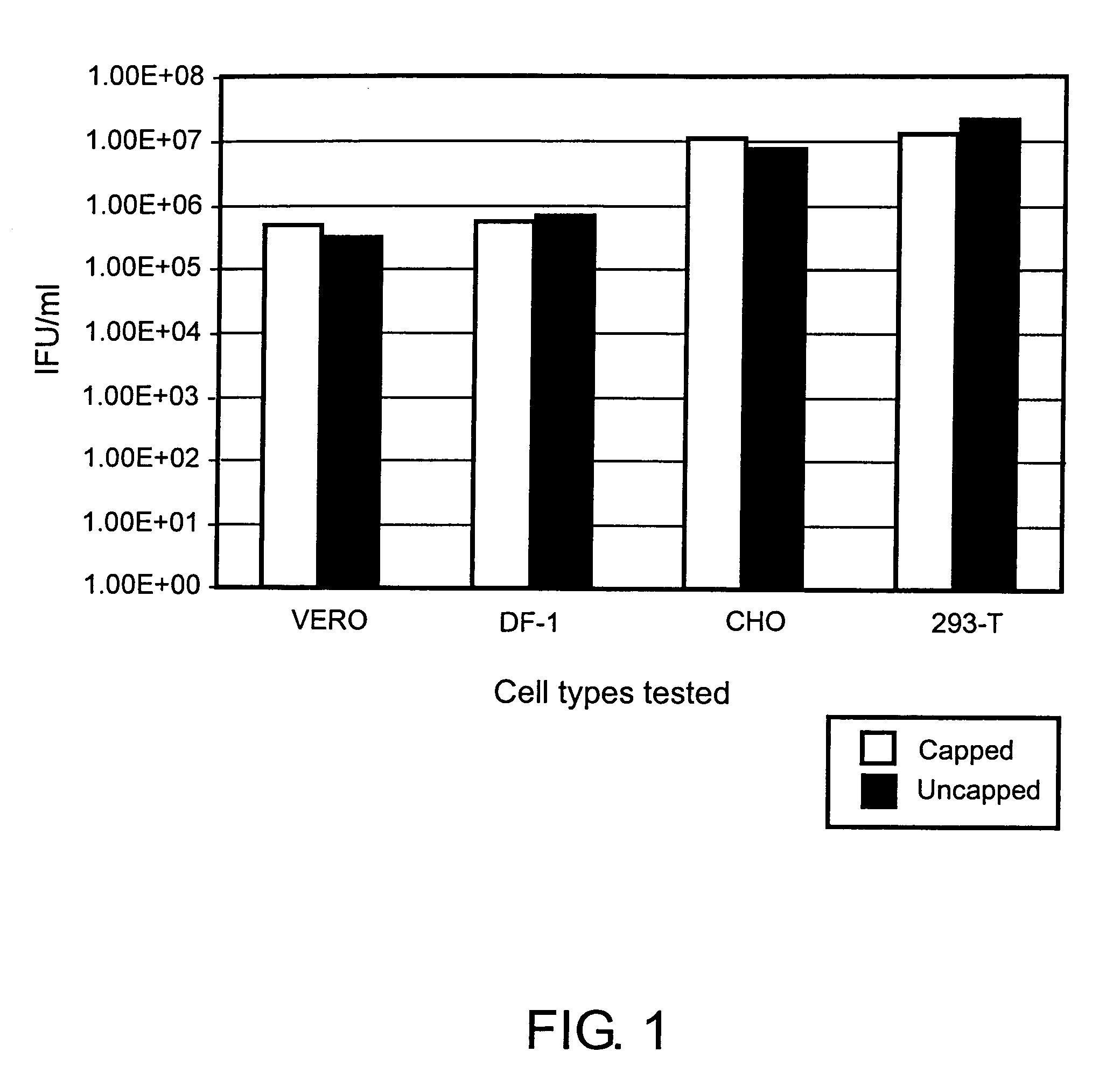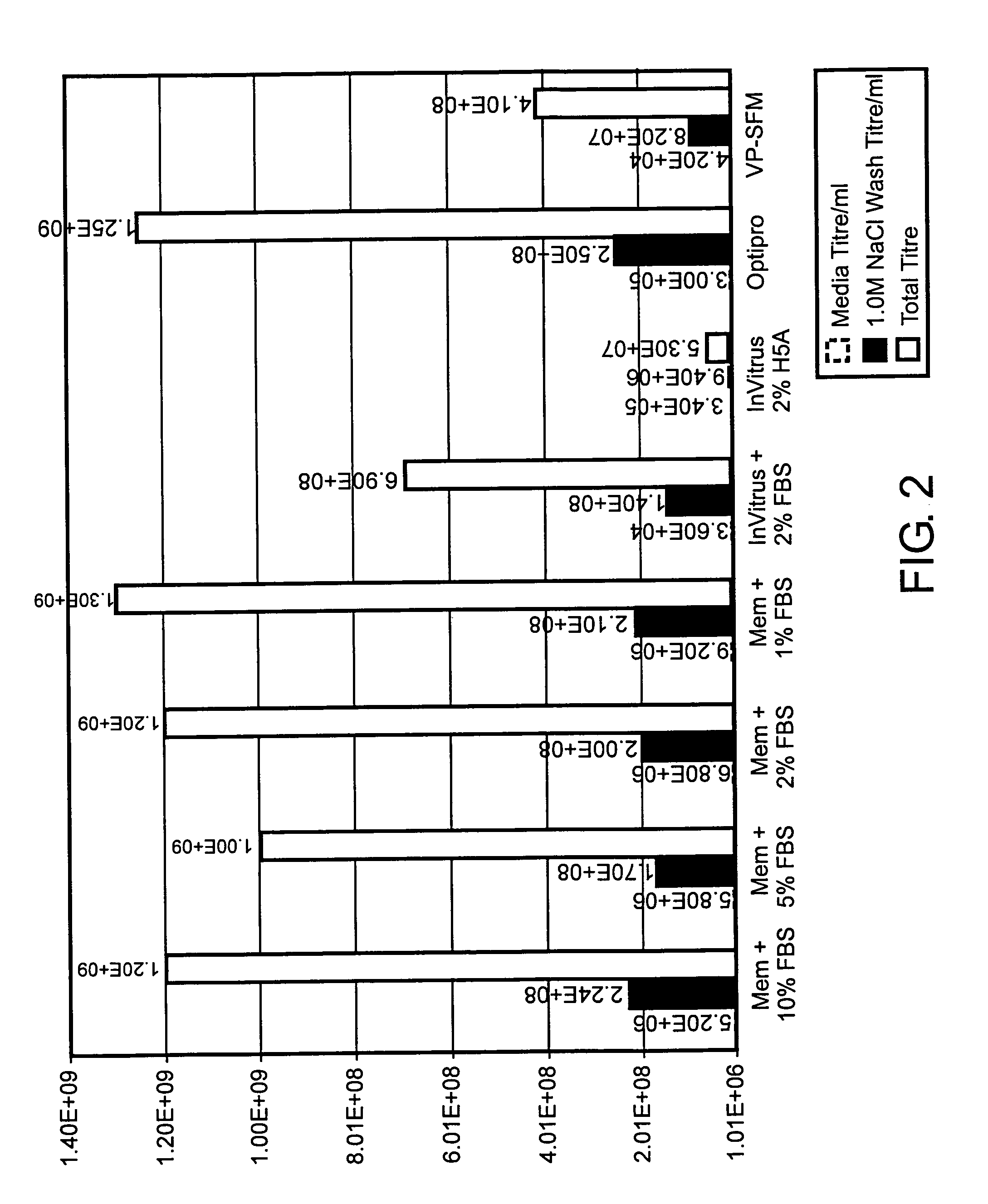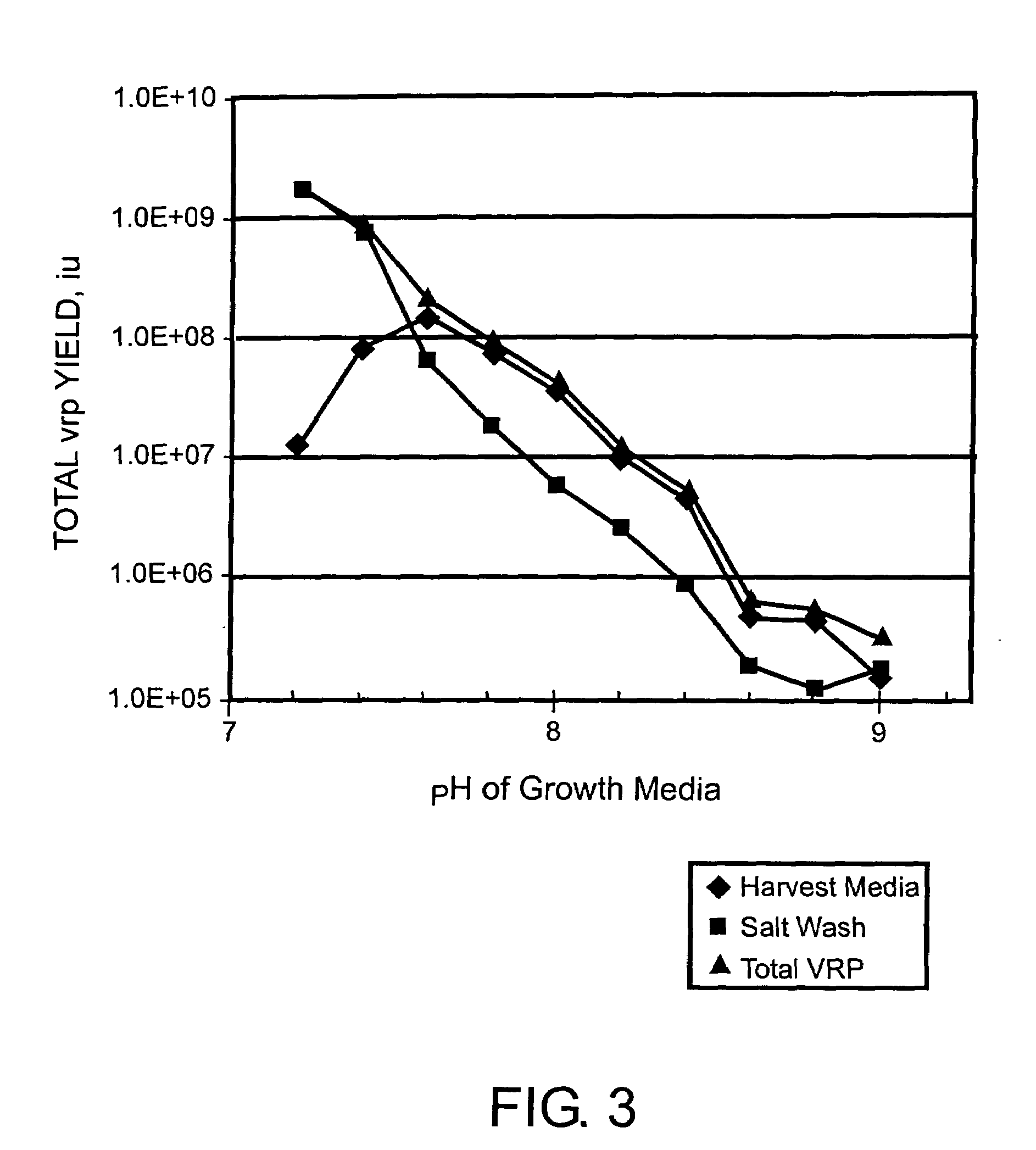Alphavirus particles and methods for preparation
a technology of alphavirus and particles, applied in the field of recombinant dna technology, can solve the problems of unsafe or impractical immunization with a live virus strain, and achieve the effect of reducing the concentration of rgtp
- Summary
- Abstract
- Description
- Claims
- Application Information
AI Technical Summary
Benefits of technology
Problems solved by technology
Method used
Image
Examples
example 1
RNA Parameters Affecting ARP Yield
A. Use of Uncapped Helper RNAs in Various Cell Types
[0091]293 T Cells
[0092]293T Cells were grown in DMEM medium with 10% FBS. Electroporation was performed in a 0.4 cm gap cuvette with a BTX square wave electroporator (Model 830; Genetronics, Inc., San Diego, Calif.) using 4.8×107 cells in PBS and 30 μg each of the following three RNAs (purified using an RNeasy Midi Kit #75142, Qiagen Corp., Valencia, Calif.): VEE capsid helper, VEE glycoprotein helper, and VEE GFP replicon. The helper RNAs were prepared by in vitro transcription with (“capped”) or without (“uncapped”) the addition of capped-G nucleotide in the transcription reaction. In the reactions that included the cap analog, the concentration of the rGTP was reduced proportionally. Four pulses at 360 V with a 450 μsec pulse length were used. After electroporation, the cells were seeded into T-75 flasks containing 25 mL media. ARPs were harvested from the media and titered on Vero cells.
[0093]C...
example 2
Key Parameters in RNA Purification
[0105]Replicon and helper RNAs were prepared as described in Example 1. For electroporation, 30 μg each replicon and helper RNAs were combined in RNase-free microcentrifuge tubes. Control tubes had either purified or unpurified RNAs alone, while the remaining tubes additionally received 5× transcription reaction buffer [400 mM HEPES-KOH (pH 7.5); 120 mM MgCl2; 10 mM spermidine; 200 mM DTT), Not I restriction enzyme, T7 enzyme mix (T7 RNA-dependent RNA polymerase, RNase inhibitor, pyrophosphatase), or combinations of these three. Final concentrations of each transcription reaction component were approximately equivalent to that in an equal volume of unpurified RNA. 1.2×107 VERO cells were added to each microcentrifuge tube, and the mixture was transferred to a 0.4 cm gap electroporation cuvette. Cells were pulsed 4 times at 580 V and 25 μF, and allowed to recover at room temperature for 10 min. Electroporated cells were seeded into T75 flasks contain...
example 3
Effect of Electroporation Conditions on ARP Yield
[0110]In initial experiments with the electroporation of certain cell lines for electroporation, for example with 293T and CEF cells, it was observed that higher ARP yields could be obtained by increasing the concentration of cells in the electroporation mixture, while maintaining the same amount of input nucleic acids.
PUM
| Property | Measurement | Unit |
|---|---|---|
| ionic strength | aaaaa | aaaaa |
| ionic strength | aaaaa | aaaaa |
| ionic strength | aaaaa | aaaaa |
Abstract
Description
Claims
Application Information
 Login to View More
Login to View More - R&D
- Intellectual Property
- Life Sciences
- Materials
- Tech Scout
- Unparalleled Data Quality
- Higher Quality Content
- 60% Fewer Hallucinations
Browse by: Latest US Patents, China's latest patents, Technical Efficacy Thesaurus, Application Domain, Technology Topic, Popular Technical Reports.
© 2025 PatSnap. All rights reserved.Legal|Privacy policy|Modern Slavery Act Transparency Statement|Sitemap|About US| Contact US: help@patsnap.com



